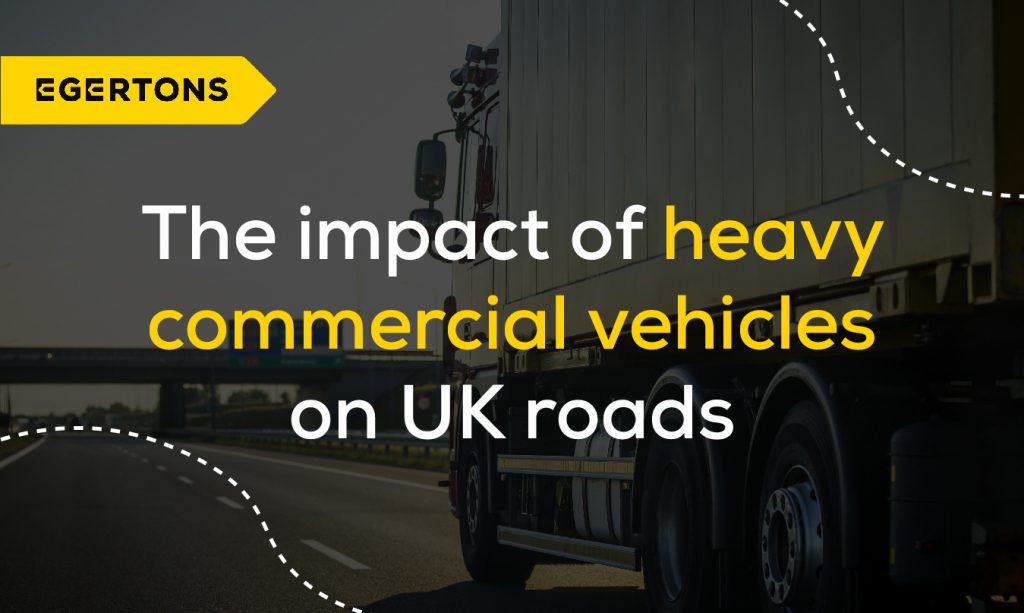As we head into 2024, it is an absolute fact that there will be more lorries on UK roads than ever before, so it’s important to consider what the impact of these extra vehicles is going to be on the state, structure and useability of the transport network.
The increasing numbers of heavy commercial vehicles means we’ll see an even larger amount of emissions, greater chance of traffic congestion and ultimately, poorer road states too. But the transport industry across the UK is facing the brunt of this on a daily basis, particularly in a few key areas.
More heavy commercial vehicles are having an environmental impact
One of the biggest issues faced by the transport industry in the UK is balancing the need to transport goods, whilst also being environmentally aware.
It’s no secret that fuel consumption puts a huge strain on the environmental sustainability of the planet, so fleets operating heavy commercial vehicles must take great care and steps to reduce their carbon emissions wherever they can.
But for a fleet operator to reduce their carbon emissions, solutions are not as straightforward as simply eliminating emissions altogether, especially given that large fleets play a vital role in economic growth.
Reducing a carbon footprint takes a delicate balance between lower emissions, transportation costs and additional factors that affect in the supply chain, so it’s not an easy thing to change overnight.
The result?
Carbon emissions are going to get worse before they get better.
Heavy commercial vehicles lead to more congestion
Every year it feels as though UK roads are becoming more congested, and the statistics back this up with latest figures from the Department for Transport (DfT) Road Traffic Estimates Report show that heavy commercial vehicles have become more important over the last decades, accounting for 17.4 billion vehicle miles travelled in the UK throughout 2022.
But, it could be argued that this is necessary for a number of reasons.
For example, with more reliance on carrying freight and products across the country, there is inevitably going to be an increase in the amount of vehicles on our roads each year. Again, the DfT figures support this, as heavy commercial vehicle traffic on motorways in 202 hit 8.2 billion vehicle miles, 47% of the total, and traffic on ‘A’ roads hit 7.8 billion vehicle miles, 45% of the total.
Latest government statistics now also show that the number of vans on British roads has hit a record high following a 37% rise in the last decade, and especially during a time where home deliveries, Christmas shopping and new year demand is at all time high, this traffic isn’t going to be dropping any time soon.
Road conditions are getting worse due to the heavy commercial vehicle increase
The hard truth is that any and all vehicles cause damage to the roads they are travelling on, but for heavier vehicles carrying large loads from one place to another, there is a disproportionately large impact upon the roads surface.
According to a recent survey by the Annual Local Authority Road Maintenance (ALARM), the reported backlog of carriageway repairs needed across the UK increased by almost a quarter across 2021, only to rise yet again throughout 2022 and leaving local authority highway teams in England and Wales requiring more than £14 billion to fix the backlog of road repairs.
The survey dives deeper into this, highlighting that average highway maintenance budgets have increased by 4.5% up to a staggering £25.8 million per authority, despite 53% of local authorities reporting either a cut or freeze in their highway maintenance budgets to meet rising inflation.
What’s more, as we feel the thick of winter time in the UK, ALARM statistics also confirm that just 51% of local roads are reported to be in good structural condition without potholes, but that the remainder of more than 100,000 miles could continue to deteriorate to the point of needing to be rebuilt within the next 15 years if appropriate maintenance measures don’t take place.
Accidents involving heavy commercial vehicles require more specialised recoveries
At any times where a heavy commercial vehicles has been involved in an accident or breakdown, rescue operations can often be difficult and time consuming, more often than not because the vehicle load itself poses a threat if damaged.
This is essentially because for commercial vehicles with heavy loads, there’s more chance of items moving unintentionally and becoming unstable during the journey.
Any shift in load can significantly affect a vehicles handling on the road, plus the centre of gravity of a loaded goods vehicle tends to be much higher than a passenger car, making a loaded commercial vehicle more likely to roll over than a car, even when travelling at the same speed.
Because of this it’s essential that a rescue operator understands the stability of a load such as how it was secured in the first place vs. what damage the accident has caused.
Heavy commercial vehicle loads could also contain dangerous goods too, as the latest Domestic Road Freight Statistics report highlighted that out of the 485,900 registered HGVs in the UK in 2020, 4% of all goods lifted domestically were declared as dangerous goods. This accounts for 53 million tonnes of assets from flammable liquids such as alcohol (67%) gasses (16%) and corrosive substances (6%).
In situations like this where a commercial vehicle breaks down, urgent recovery is of the upmost importance, not only for the business themselves, but also for the safety of the driver and other road users alike.
Any leak of hazardous materials can be a severe threat, so it’s essential that a rescue and recovery operator is experienced in how to safely handle a vehicle without causing any further damage or potential chemical reactions.
We then have heavy commercial vehicles carrying loose bulk loads such as wood chippings, pellets and grain, or machinery such as steel and plant loads which could be extremely serious if they shift during transit.
Because of all these potential risk factors, it means that greater time and care must be spent during the recovery process. The right rescue vehicles must be deployed first time, and the area must be safely evacuated before the vehicle is moved, which, if this were to happen on a busy main road or motorway, unfortunately means a long wait time for other road users to safely resume their journeys.
That’s why it’s so important to appoint the right heavy commercial vehicle recovery partner
Egertons are one of the UK’s leading vehicle rescue and recovery operators, with services stretching from breakdown recovery to specialist assistance and recovery, available 24/7/365 service across the country.
But the main reason choose us? Because our fleet of incident response vehicles, range of equipment available on hand and the technology our fleet is equipped with, allows us to deploy the exact right vehicles, first time, helping to keep your vehicle downtime to an absolute minimum and ensure recovery takes place as safely and efficiently as possible.
What’s more, we also hold PAS 43, ISO 9001 and NNHS Sector 17 accreditations, helping to ensure that all our recoveries and repairs are completed to the very highest industry standards.
We’re the preferred vehicle rescue and recovery operator for UK fleets to rely on, no matter what.
In other words, when you need us, we’ll be right here.


